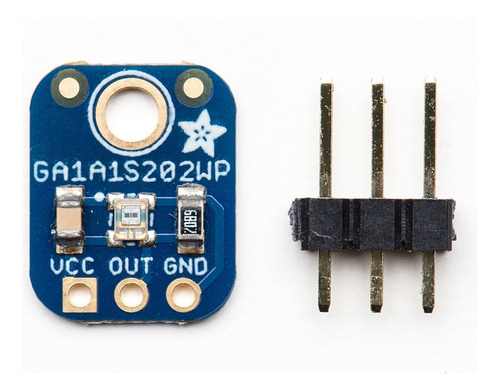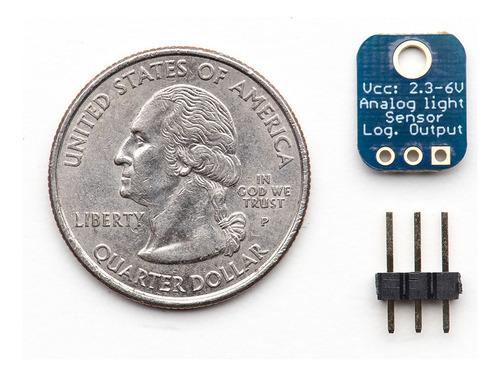

Adafruit Sensor De Luz Ga1a12s202 Escala Logaritmica Arduino
en 3 meses sin intereses de
IVA incluido
Lo que tienes que saber de este producto
- Microcontrolador: Arduino, PIC, AVR, NXP, Raspberry Pi ....
- Voltaje de funcionamiento: 2.3V - 6V.
- Frecuencia del reloj: 0kHz.
- Capacidad de la memoria flash 0KB.
- Capacidad SRAM: 0KB.
- Capacidad EEPROM: .
Características del producto
Características principales
Marca | Adafruit |
|---|---|
Modelo | GA1A12S202 |
Otros
Microcontrolador | Arduino, PIC, AVR, NXP, Raspberry Pi ... |
|---|---|
Voltaje de funcionamiento | 2.3V - 6V |
Voltaje de entrada recomendado | 2.3V - 6V |
Voltaje de entrada límite | 2.3V - 6V |
Frecuencia del reloj | 0 kHz |
Capacidad de la memoria flash | 0 KB |
Capacidad SRAM | 0 KB |
Descripción
****************** COLDFIRE ELECTRONICA *******************
** PRODUCTO DE ALTA CALIDAD, FABRICADO EN USA POR ADAFRUIT, NO CHINO ! **
Excelente sensor de luz analogico con escala logaritmica. Sustituye y actualiza a tu foto celda...
Podras medir cambios muy sutiles en la intensidad de la luz, desde la oscuridad total hasta el resplandor de la luz solar, y lo mejor de todo, sin tener que hacer calibraciones ni arreglos complicados a diferencia de las tipicas Foto Celdas LDR.
Upgrade a project that uses a photocell with the GA1A12S202 analog light sensor. Like a CdS photo-cell, the sensor does not require a microcontroller, the analog voltage output increases with the amount of light shining on the sensor face. This sensor has a lot of improvements that make it better for nearly any project.
The biggest improvement over plain photocells is a true log-lin relationship with light levels. Most light sensors have a linear relationship with light levels, which means that they're not very sensitive to changes in darkened areas and 'max' out very easily when there's a lot of light. Sometimes you can tweak a resistor to make them better in dark or bright light but its hard to get good performance at both ends. This sensor is logarithmic over a large dynamic range of 3 to 55,000 Lux, so it has a lot of sensitivity at low light levels but is also nearly impossible to "max out" so you can use it indoors or outdoors without changing code or calibration. Since the sensor is fabricated on a chip, there are also fewer manufacturing variations, so you won't have to calibrate the sensor from one board to another.
Using the sensor is easy as pie: connect the Vin to 2.3-6VDC, Gnd to ground and measure the analog output on OUT. It will range up to 3V (at extremely bright outdoor sunlight). On an Arduino, just use analogRead() with the OUT pin connected to an analog pin. For more information including graphs, power consumption, etc check out the datasheet in the Tech Details tab. On this breakout we placed a 68KO resistor from OUT to ground to turn the current into a voltage.
* Power with 2.3-6V
* Onboard 68K load resistor for max 3V analog output
* True Logarithmic Response from 3 to 55,000 Lux!
* 0.2 grams
* 0.4" x 0.5" x 0.06" (10mm x 13mm x 1.5mm)
* 0.1" (2.5mm) mounting hole
* INCLUYE TUTORIAL Y EJEMPLO CON ARDUINO ( hecho por Adafruit, PDF en ingles )
Garantía del vendedor: 30 días
Vendido por COLDFIRE_ELECTRONICA
+100
Ventas concretadas
Brinda buena atención
Entrega sus productos a tiempo
Medios de pago
Preguntas y respuestas
¿Qué quieres saber?
Pregúntale al vendedor
Nadie ha hecho preguntas todavía.
¡Haz la primera!
Publicación #2076140545
DenunciarSe abrirá en una nueva ventana